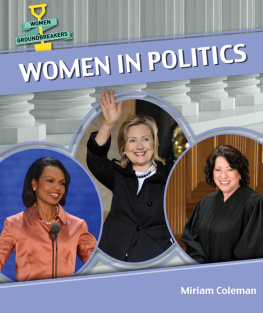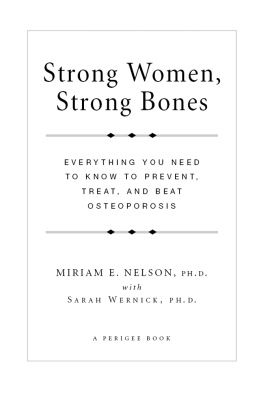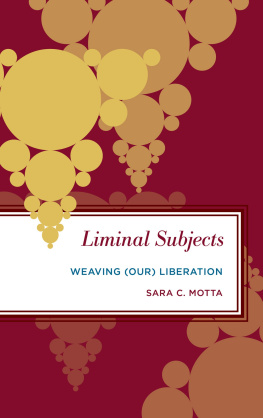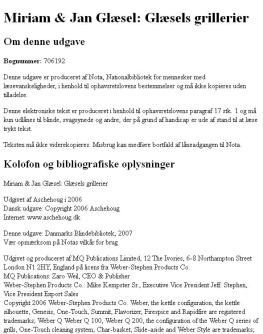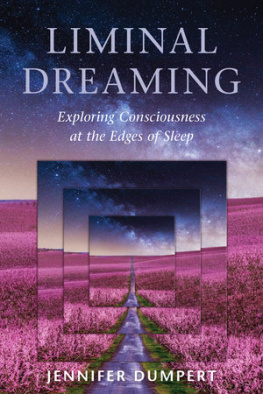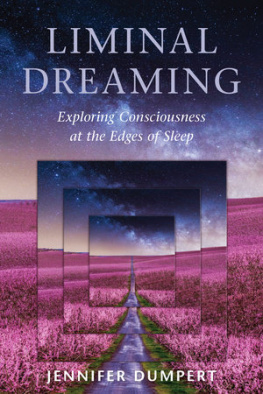Borham-Puyal Miriam - Contemporary Rewritings of Liminal Women
Here you can read online Borham-Puyal Miriam - Contemporary Rewritings of Liminal Women full text of the book (entire story) in english for free. Download pdf and epub, get meaning, cover and reviews about this ebook. year: 2020, publisher: Taylor & Francis Group, genre: Romance novel. Description of the work, (preface) as well as reviews are available. Best literature library LitArk.com created for fans of good reading and offers a wide selection of genres:
Romance novel
Science fiction
Adventure
Detective
Science
History
Home and family
Prose
Art
Politics
Computer
Non-fiction
Religion
Business
Children
Humor
Choose a favorite category and find really read worthwhile books. Enjoy immersion in the world of imagination, feel the emotions of the characters or learn something new for yourself, make an fascinating discovery.

- Book:Contemporary Rewritings of Liminal Women
- Author:
- Publisher:Taylor & Francis Group
- Genre:
- Year:2020
- Rating:3 / 5
- Favourites:Add to favourites
- Your mark:
- 60
- 1
- 2
- 3
- 4
- 5
Contemporary Rewritings of Liminal Women: summary, description and annotation
We offer to read an annotation, description, summary or preface (depends on what the author of the book "Contemporary Rewritings of Liminal Women" wrote himself). If you haven't found the necessary information about the book — write in the comments, we will try to find it.
Contemporary Rewritings of Liminal Women — read online for free the complete book (whole text) full work
Below is the text of the book, divided by pages. System saving the place of the last page read, allows you to conveniently read the book "Contemporary Rewritings of Liminal Women" online for free, without having to search again every time where you left off. Put a bookmark, and you can go to the page where you finished reading at any time.
Font size:
Interval:
Bookmark:
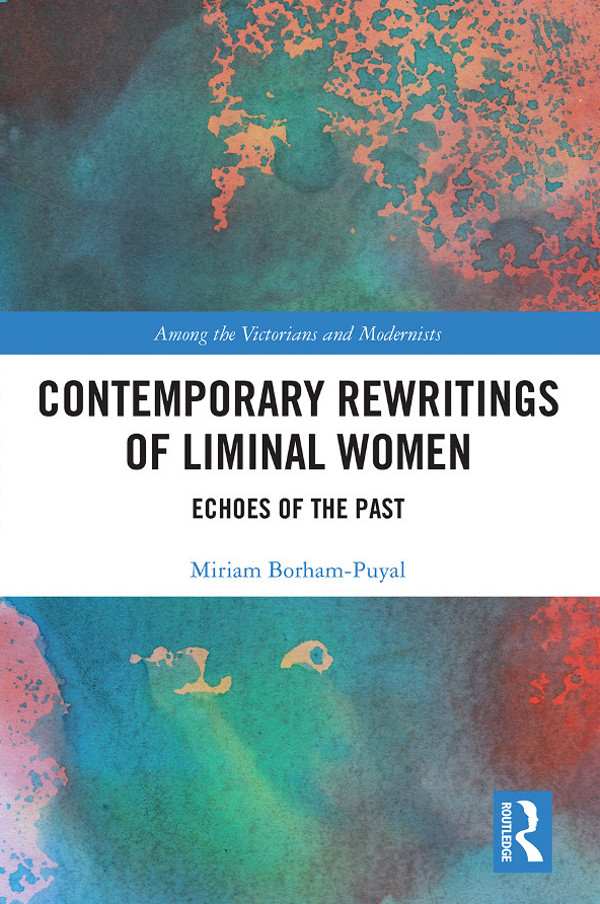
This book explores the concept of liminality in the representation of women in eighteenth and nineteenth century literature, as well as in contemporary rewritings, such as novels, films, television shows, videogames, and graphic novels. In particular, the volume focuses on vampires, prostitutes, quixotes, and detectives as examples of new women who inhabit the margins of society and populate its narratives. Therefore, it places together for the first time four important liminal identities, while it explores a relevant corpus that comprises four centuries and several countries. Its diachronic, transnational, and comparative approach emphasizes the representation across time and space of female sexuality, gender violence, and womens rights, also employing a liminal stance in its literary analysis: facing the past in order to understand the present. By underlining the dialogue between past and present this monograph contributes to contemporary debates on the representation of women and the construction of femininity as opposed to hegemonic masculinity, for it exposes the line of thought that has brought us to the present moment, hence, challenging assumed stereotypes and narratives. In addition, by using popular narratives and media, the present work highlights the value of literature, films, or alternative forms of storytelling to understand how womens place in society, their voice, and their presence have been and are still negotiated in spaces of visibility, agency, and power.
Miriam Borham-Puyal lectures at the English Department of the University of Salamanca. She is the author of the monograph Quijotes con enaguas. Encrucijada de gneros en el siglo XVIII britnico (2015) and has published extensively on British quixotes. She has also authored pieces on women writers from the seventeenth to the twenty-first century, including Jane Austen, Jane Barker, Mary Brunton, Mary Hays, Charlotte Lennox, Hannah More, Scarlett Thomas, and Mary Wollstonecraft. As part of her research in Digital Humanities, she has published articles on female characters in videogames and women writers online. She is the editor of a volume on rewritings of Frankenstein (2018), which places particular emphasis on film, television, videogames, and e-lit.
Edited by Dennis Denisoff
This series publishes monographs and essay collections on literature, art, and culture in the context of the diverse aesthetic, political, social, technological, and scientific innovations that arose among the Victorians and Modernists. Viable topics include, but are not limited to, artistic and cultural debates and movements; influential figures and communities; and agitations and developments regarding subjects such as animals, commodification, decadence, degeneracy, democracy, desire, ecology, gender, nationalism, the paranormal, performance, public art, sex, socialism, spiritualities, transnationalism, and the urban. Studies that address continuities between the Victorians and Modernists are welcome. Work on recent responses to the periods such as Neo-Victorian novels, graphic novels, and film will also be considered.
18 Nordic Literature of Decadence
Edited by Pirjo Lyytikinen, Riikka Rossi, Viola Parente-apkov, and Mirjam Hinrikus
19 The Socio-Literary Imaginary in 19th and 20th Century Britain
Victorian and Edwardian Inflections
Edited by Maria K. Bachman and Albert D. Pionke
20 Poetry and Uselessness
From Coleridge to Ashbery
Robert Archambeau
21 The Ethical Vision of George Eliot
Thomas Albrecht
22 Contemporary Rewritings of Liminal Women
Echoes of the Past
Miriam Borham-Puyal
For more information about this series, please visit: https://www.routledge.com/Among-the-Victorians-and-Modernists/book-series/ASHSER4035
Echoes of the Past
Miriam Borham-Puyal

First published 2020
by Routledge
52 Vanderbilt Avenue, New York, NY 10017
and by Routledge
2 Park Square, Milton Park, Abingdon, Oxon, OX14 4RN
Routledge is an imprint of the Taylor & Francis Group, an informa business
2020 Taylor & Francis
The right of Miriam Borham-Puyal to be identified as author of this work has been asserted by her in accordance with sections 77 and 78 of the Copyright, Designs and Patents Act 1988.
All rights reserved. No part of this book may be reprinted or reproduced or utilised in any form or by any electronic, mechanical, or other means, now known or hereafter invented, including photocopying and recording, or in any information storage or retrieval system, without permission in writing from the publishers.
Trademark notice: Product or corporate names may be trademarks or registered trademarks, and are used only for identification and explanation without intent to infringe.
Library of Congress Cataloging-in-Publication Data
A catalog record for this title has been requested
ISBN: 978-0-367-27778-9 (hbk)
ISBN: 978-0-429-29782-3 (ebk)
Typeset in Sabon
by codeMantra
In loving memory of Mara, Aquilina, Pilar, Aurelia and Carmen Peralta Sanz.
Your trace remains and makes us stronger.
Several entities provided the financial support that made the research of this book possible. I gratefully acknowledge the Spanish Ministry of Education for granting a research stay under the Jos de Castillejo program (CAS18/00305), as well as the Ministry of Economy, Industry and Competitiveness for the project Orientation: A Dynamic Perspective on Contemporary Fiction and Culture (1990-onwards) (Ref. FFI2017-86417-P).
I wish to convey my thanks to the faculty and librarians at the University of Manchester and at Manchester Metropolitan University for their invaluable help during my stay.
Thanks are also due to the Department of English at the University of Salamanca for supporting the writing of this work. I am grateful to all the colleagues who helped me, providing ideas and time to write.
Finally, a very special thank you goes to Daniel Escandell-Montiel for his suggestions, support, and early proof-reading of parts of this book. And, above all else, thank you to my husband Pedro for his unfailing emotional and culinary sustenance.
In the middle of the night a young woman stares ahead with worry. She is surrounded by darkness, suspended in a black nowhere. She dresses humbly; she seems cold and wraps a shawl firmly around her, crossing her arms protectively. In the background it is possible to distinguish some lights and a windmill overlooking the waterthe only reference to where this scene takes place. She is the unnamed factory girl in Annie Swynnertons painting The Tryst (1880). The setting is Peel Park Lake in Salford, with its landmark windmill and its surrounding textile factories. Inspired by a local legend, Swynnerton does not portray a couples romantic encounter, but focuses instead on the girls lonely wait. According to tradition, she would then drown herself after discovering that her lover had been sent away by his wealthy parents to prevent their union. He would subsequently commit suicide and a regretful father would preserve their trysting place, the windmill (Herrington and Milner 44).
Font size:
Interval:
Bookmark:
Similar books «Contemporary Rewritings of Liminal Women»
Look at similar books to Contemporary Rewritings of Liminal Women. We have selected literature similar in name and meaning in the hope of providing readers with more options to find new, interesting, not yet read works.
Discussion, reviews of the book Contemporary Rewritings of Liminal Women and just readers' own opinions. Leave your comments, write what you think about the work, its meaning or the main characters. Specify what exactly you liked and what you didn't like, and why you think so.

